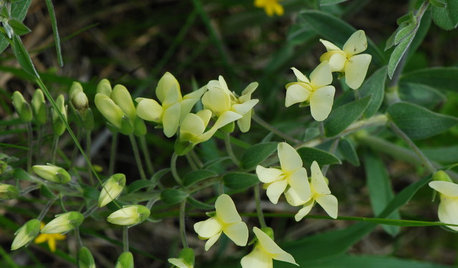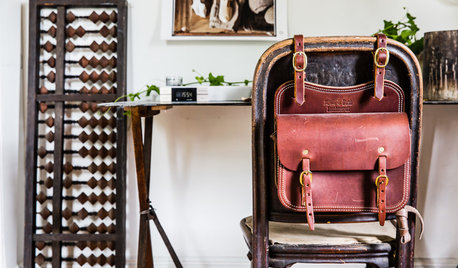How could you tell if your tomato plants cross pollinated?
RyanC95
9 years ago
Related Stories

FLOWERS AND PLANTSPlant Baptisia Bracteata for Blooms Pollinators Will Love
Longbract wild indigo is great in dry soil, and its spring flowers attract butterflies and bumblebees
Full Story
EDIBLE GARDENSSummer Crops: How to Grow Tomatoes
Plant tomato seedlings in spring for one of the best tastes of summer, fresh from your backyard
Full Story
ARCHITECTUREHouzz Tour: Fresh Ideas in a Former Tomato Packing Shed
A formerly metal-clad structure is now a beautiful wood home designed to capture the light and preserve open space
Full Story
EDIBLE GARDENSGarden BFFs? Why Your Vegetables Are Begging for Companion Plants
Foster friendships among plants for protection from pests, pollination support and color camaraderie
Full Story
ARCHITECTURETell a Story With Design for a More Meaningful Home
Go beyond a home's bones to find the narrative at its heart, for a more rewarding experience
Full Story
HOUZZ TOURSMy Houzz: Curiosities Tell a Story
An interiors stylist uses her house as a 3D timeline of her tales and travels
Full Story
LIFEThe Polite House: How Can I Tell a Construction Crew to Pipe Down?
If workers around your home are doing things that bother you, there’s a diplomatic way to approach them
Full Story
SMALL SPACESCould You Live in a Tiny House?
Here are 10 things to consider if you’re thinking of downsizing — way down
Full Story
GARDENING GUIDESGreat Design Plant: Asclepias Incarnata for a Butterfly Garden
Beautiful swamp milkweed makes it easy to help monarchs and other pollinators in eastern U.S. gardens
Full Story
GARDENING GUIDESInvite Mining Bees to Your Garden by Planting Their Favorite Plants
Look for mining bees (Andrena) pollinating woodland wildflowers in U.S. gardens this spring
Full StoryMore Discussions






donna_in_sask
digdirt2
Related Professionals
Edmond Landscape Architects & Landscape Designers · Brentwood Landscape Architects & Landscape Designers · Medford Landscape Contractors · Lake Zurich Landscape Contractors · Milford Landscape Contractors · Sammamish Landscape Contractors · Stony Brook Landscape Contractors · Wilsonville Landscape Contractors · Arlington General Contractors · Augusta General Contractors · Country Club Hills General Contractors · Fort Lee General Contractors · Hillsborough General Contractors · Fort Pierce Decks, Patios & Outdoor Enclosures · Tomball Decks, Patios & Outdoor Enclosuresmissingtheobvious
seysonn
carolyn137
seysonn
digdirt2
seysonn
digdirt2
hoosier40 6a Southern IN
seysonn
carolyn137
digdirt2
seysonn
missingtheobvious
seysonn
carolyn137
seysonn
carolyn137